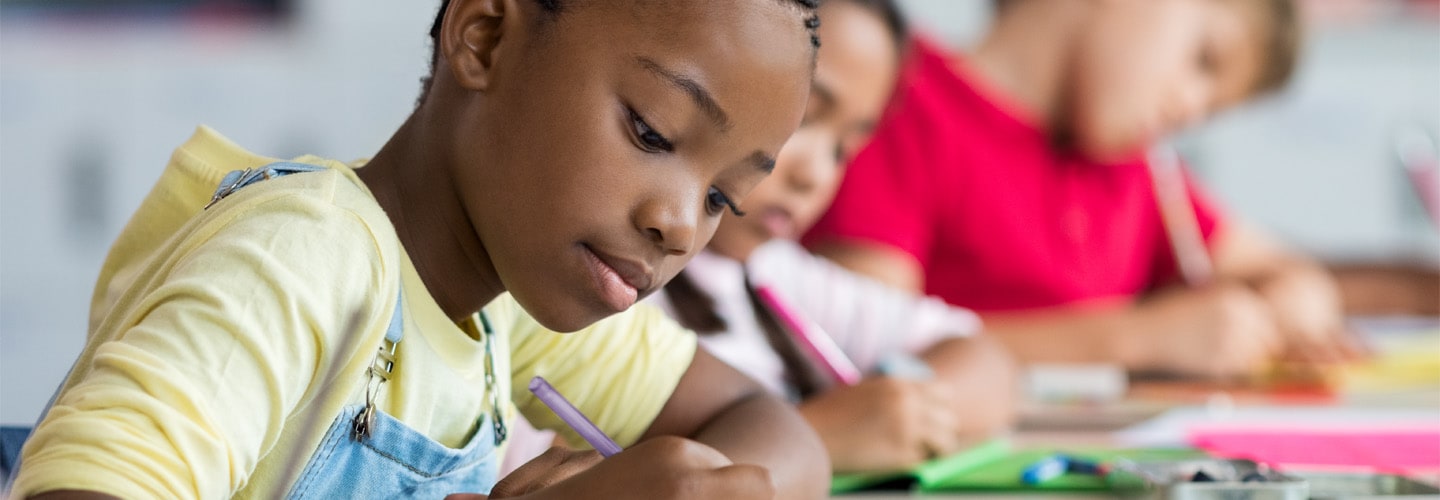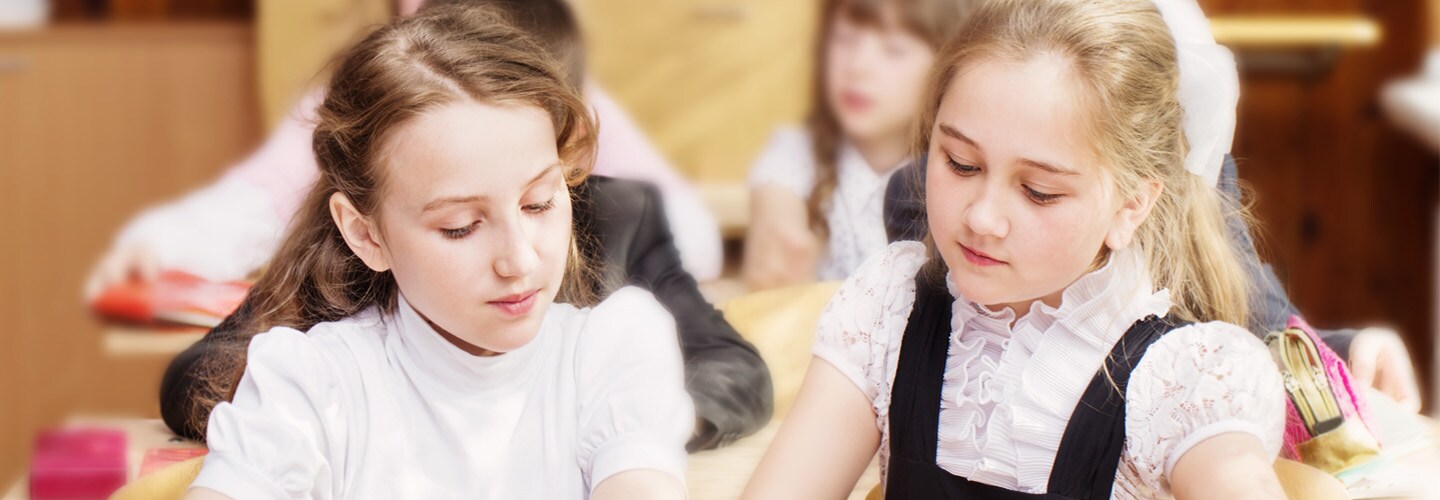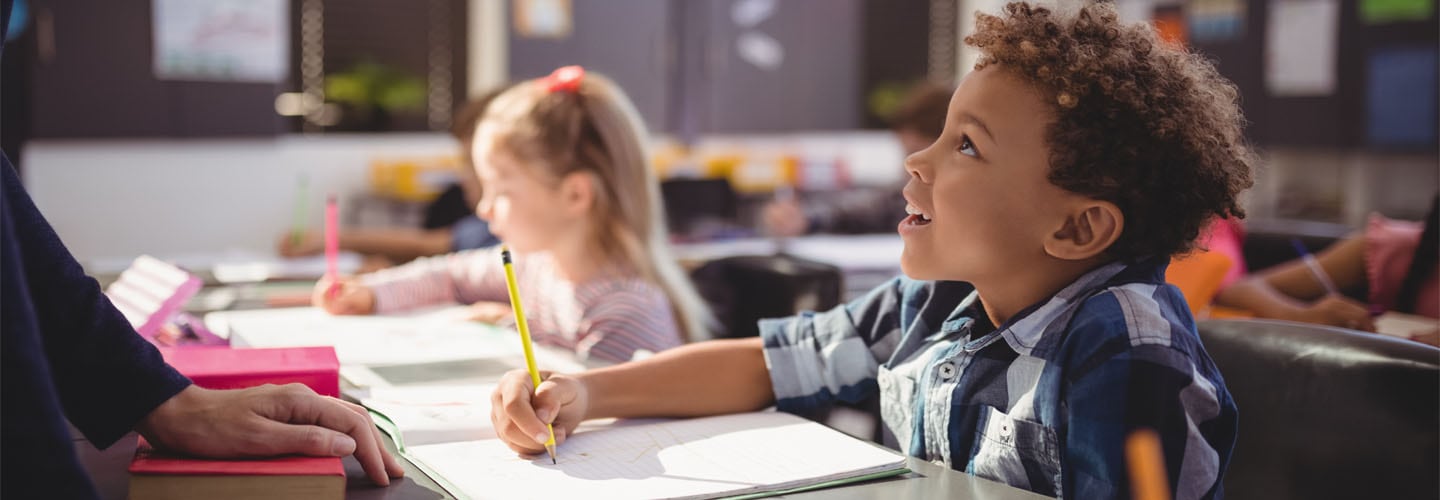Are you teaching in a 21st-century classroom? Chances are, If you are an English educator working in the classroom today, you have already moved well ahead of your peers and colleagues teaching math, science, and good old-fashioned grammar. Now that you know you are a 21st-century teacher, what does that mean? And how do you know if you have moved ahead of the curve to embrace what we call 21st-century skills?
Actually, "21st-century skills" is a bit of a misnomer. The prized skills of this age have existed in teaching and learning as long as we have been teaching and learning. In a modern-day class, Socrates and Aristotle would feel right at home (although maybe underdressed).
The phrase itself is meant to imply a classroom ready for the upcoming STEM needs of employment that will allow for innovation, development and significant advances across tech and non-tech industries. Yet, the skills themselves do not imply a highly technological classroom. A modern 21st-century class can be a surprisingly low-budget place.
It can be summarized by the 4Cs:
- Communication
- Critical Thinking
- Creativity
- Collaboration
Reading through this list, you may think, "Hey, those are my classroom goals as an English language teacher!" Finally, the rest of the world has caught up with the modern English language classroom. Of course, when describing these skills, we aren't just talking about teaching English, but skills that can be used to prepare learners for the modern age. This means we want our students to be able to:
- Perform independently and with groups in a highly technologically advanced atmosphere.
- Be ready for daily, global interaction.
- Be capable of adaptive, flexible and creative thinking.
- Understand how to plan for, build, and include collaboration with peers who are colleagues and experts in the field.
Students and 21st-century skills
This goes a bit above and beyond the basics of the walls of the English language classroom. And yet, preparing our students for the 21st century doesn't require a classroom resembling a science fiction movie set. Several teachers have proved that you can embed these skills by utilizing the most important resource available in the classroom.
Your students.
Sergio Correra is an inspired young teacher at the Jose Urbina Lopez Primary School on the US Border with Mexico. After a year of teaching uninspired curriculum to disengaged students, he returned to the drawing board. He spent time researching ways to improve student engagement and performance and stumbled across exciting research that could be boiled down to one question: Why? Or rather, getting students to ask the question: "Why?" At the beginning of his next school year, he arranged the desk in a circle, sat his students down and asked: "What do you want to learn about?".
Using this as the jumping-off point, he encouraged students to ask questions, seek out more information, and find more questions to answer.
Over the next year, he saw his students' test scores rise, the engagement and enthusiasm improved and he received approval from his principal and fellow educators. With few resources and limited access to technology, he found his students shifting from the lowest testing group in the nation to being ranked among the highest for their performance on standardized tests in the country. One of his students was the highest-performing maths student in the country.
Mr. Correra was inspired by research and reports based on the work of the Indian educator Sugata Mitra. The principle behind Mr. Mitra's approach is to drive student's curiosity by letting them carry out their own learning. In one of his most famous examples, he walked into a classroom in India with computers loaded with information. He explained to the students, now curious about the big shining boxes that held inside something interesting.
And then he left the students to it.
In the course of a year, students had taught themselves everything from English to molecular biology, all without the guidance of a teacher. Rather, they were driven by their natural curiosity, playing off of each other's discoveries to go farther and learn more. Embodying what it means to be self-guided, innovative, collaborative and curious learners.
Keeping your curriculum up to date
These students who were given freedom are much more likely to ask questions out of curiosity, motivate themselves and learn without guidance. And while this may be wonderful for learners, this isn't exactly helpful for teachers. To get to the 21st-century skills and inspire motivation, do we have to throw away our syllabus and books and trust only in our learners to motivate themselves?
Fortunately for those of us who have chosen a career in education, that is not the case. We as educators can take lessons from Mr. Correra and Mr. Mitra and use these as a way to inspire interest and engagement in our own classroom while building these skills in our learners.
As language teachers, it's a matter of blending the 4Cs more thoughtfully into a student-centered classroom where learners can engage in high-interest content that is relevant, useful, and promotes innovation.
Take your average prepositions lesson as an example. Even in the best communicative classroom, a teacher may still spend time explaining the rules, setting up the activity and delivering instruction. By applying the 4Cs we can turn this lesson a bit more on its head, making a typical ELL grammar lesson magical.
For example:
Collaborate: Start by handing out magazines or picture books. Have the students work together and choose a picture.
Communication, critical thinking, and creativity: Ask your students to work together to create two ways to give directions. One set of directions for a student who is blind. Another set of directions for a student who is deaf.
Encourage students to think outside the box and think about ways to give directions using a computer, a mobile phone, a television, or a YouTube video. While there may be some L1 use in the classroom, the goal is for the final product to be in English. Stand back and watch your learners go.
Another way to engage with 21st-century skills using a typical ELL lesson: the "What's your favorite food lesson?" At some point, we have all experienced it.
Collaborate: In groups, have students create a survey to assess classroom interest in 10 different foods representing different types of meals (breakfast, lunch, dinner, dessert).
Communication: Once finished, have learners use the information to create a pie or bar graph to communicate the results and determine which meals are the favorite.
Critical thinking: Have the students compare their answers with answers from other groups. How many differences are there in the reporting? Is the information consistent with the same foods or does it change drastically? Have students compare their results with other teams. Then ask the groups to create a short written or spoken piece to explain how their results differed from other students.
Creativity: Using the information collected from the class and after analyzing data from other students, have groups work together to create an advertising campaign that will make the foods that students liked least into foods students may like more. For example, if the survey said that most students did not like kim-chi-chigae for breakfast, the group would need to work together to create an advertising campaign to make kim-chi-chigae seem like a tasty choice for breakfast. To do this students should consider what makes certain foods more popular in the class.
This may require further follow-up interviewing to find out why students like one thing and not another; this information can then be used in the campaign. This lesson may play out over a few days, but in the end, everyone involved will have gotten much more out of the lesson than they had anticipated.
Both of these examples represent the use of skills in the ELL classroom. Each lesson also embeds, in one way or another, critical STEM skills.
In the preposition lesson, the students may use engineering and technology to find a better way to give directions. In our favorite foods lesson, students engage with science (and a bit of sociology) and mathematics. Altogether it becomes a rounded classroom experience where teachers have an active role as facilitators and students become inspired, self-guided learners who still manage to work inside of the confines of the curriculum.
In the end, 21st-century skills, and using them in the classroom is not really about teaching at all. These skills are truly ones that will spell success for our learners in the future, leading them to be capable, Independent and curious individuals.
Our real challenge as educators is to model a desire to embrace the known, the unknown, and the just plain unknowable. As Alwin Toffler, writer and futurist, put it: "The illiterate of the 21st century will not be those who cannot read and write, but those who cannot learn, unlearn, and relearn."








